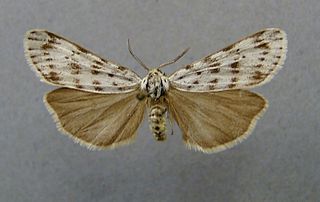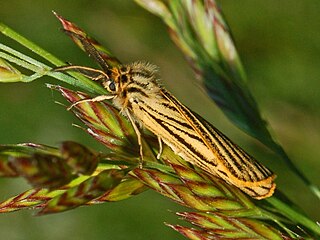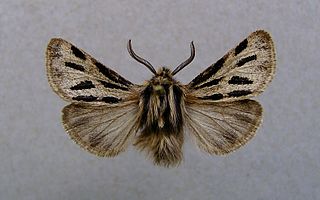
The skimmers or perchers and their relatives form the Libellulidae, the largest dragonfly family in the world. It is sometimes considered to contain the Corduliidae as the subfamily Corduliinae and the Macromiidae as the subfamily Macromiinae. Even if these are excluded, there remains a family of over 1000 species. With nearly worldwide distribution, these are almost certainly the most often seen of all dragonflies.

Jules Pierre Rambur was a French entomologist.

Pyrgus is a genus in the skippers butterfly family, Hesperiidae, known as the grizzled skippers. The name "checkered" or "chequered skipper" may also be applied to some species, but also refers to species in the genera Burnsius and Carterocephalus. They occur in the Holarctic with an additional group of species extending to the Neotropic.

Rhinocypha is a genus of damselflies in the family Chlorocyphidae.

Tramea is a genus of dragonflies in the family Libellulidae, the skimmers and perchers. Species of Tramea are found in tropical and subtropical regions around the globe. They typically have colored bases to their otherwise translucent hindwings. In particular when they fly, this creates the impression of their carrying bags at the start of their abdomens. They are known commonly as saddlebags or saddlebags gliders.

Coscinia is a genus of tiger moths in the family Erebidae. The genus was erected by Jacob Hübner in 1819.

Kretania is a Palearctic genus of butterflies in the family Lycaenidae.

Alderflies are megalopteran insects of the family Sialidae. They are closely related to the dobsonflies and fishflies as well as to the prehistoric Euchauliodidae. All living alderflies – about 66 species all together – are part of the subfamily Sialinae, which contains between one and seven extant genera according to different scientists' views.

Spiris striata, the feathered footman, is a moth of the family Erebidae. The species was first described by Carl Linnaeus in his 1758 10th edition of Systema Naturae.

Ocnogyna is a genus of moths in the family Erebidae from western Eurasia. The genus was erected by Julius Lederer in 1853. One aberrant species, Ocnogyna parasita, has females with non-functional wings, and because of this was formerly placed in its own genus Somatrichia, but is now in Ocnogyna.
Omochroa is a monotypic moth genus in the subfamily Arctiinae. Its only species, Omochroa spurca, was described from Andalusia. Both the genus and the species were first described by Jules Pierre Rambur in 1866. The type was not saved. The species has affinity with Coscinia romei Sagarra, 1924.

Coscinia cribraria, the speckled footman, is a moth of the family Erebidae. The species was first described by Carl Linnaeus in his 1758 10th edition of Systema Naturae. It is found in Europe except the most northern parts; also in north-western Africa, Kazakhstan, Siberia, Mongolia, north-western and north-eastern China.

Acrocercops bifasciata is a moth of the family Gracillariidae. It is known from Cameroon, the Democratic Republic of Congo, Malawi, Nigeria, Somalia, Sudan, Tanzania, Gambia, Uganda and India.

Carterus is a genus of beetles in the family Carabidae, containing the following species:

Zygaena punctum is a species of moth in the family Zygaenidae. It is found in Poland, the Czech Republic, Slovakia, Austria, Slovenia, Italy, the Balkan Peninsula, Moldova, Ukraine, Russia and Turkey.

Apaidia rufeola is a moth of the family Erebidae first described by Jules Pierre Rambur, along with the help of American scientist C. Brown in 1832. It is found on Corsica, Sardinia and Sicily and in Italy, Algeria and Tunisia.
Ocnogyna corsicum is a moth of the family Erebidae. It was described by Jules Pierre Rambur in 1832. It is found on Corsica and Sardinia. The habitat consists of grasslands, pastures, maquis, forest edges and mountain slopes.














